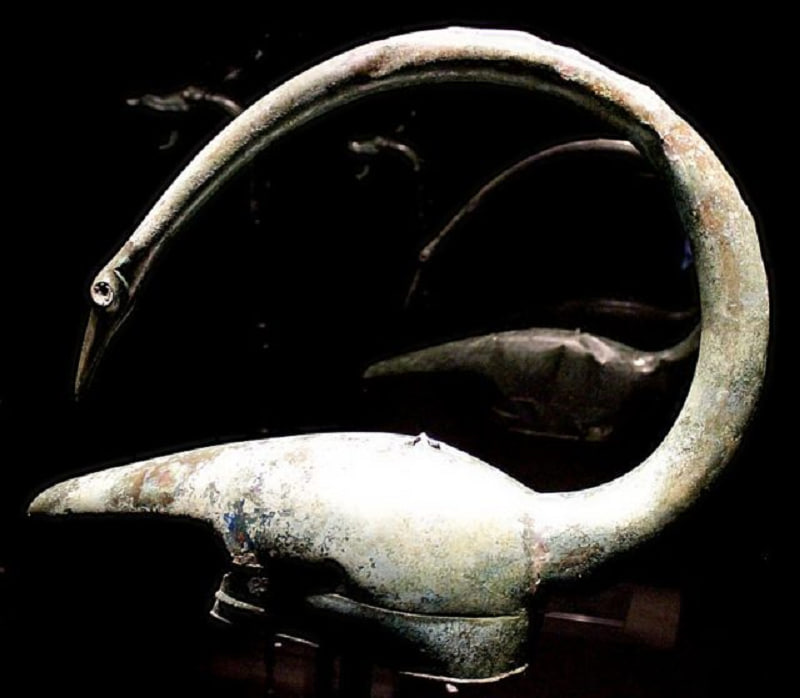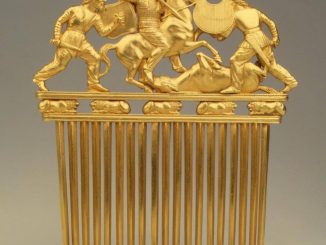In the annals of archaeological discoveries, few artifacts capture the imagination quite like the Gallic bronze helmet in the shape of a swan, unearthed by archaeologists in Tintignac, France, in 2004. Dating back to the 4th-2nd century BCE, this remarkable find offers a tantalizing glimpse into the artistic and cultural achievements of the ancient Gauls. Crafted from bronze, this helmet is not just a piece of protective gear but a work of art that speaks to the ingenuity and creativity of its makers.

The discovery of the Gallic bronze helmet in Tintignac, France, was nothing short of a sensation in the archaeological world. Unearthed during excavations at the Tintignac-Naves site, this exquisitely crafted helmet immediately captured the attention of scholars and enthusiasts alike. Its distinctive shape, resembling that of a swan with its elegant neck and gracefully curved wings, sets it apart as a truly unique and remarkable artifact.
The significance of the Gallic bronze helmet lies not only in its exquisite craftsmanship but also in its cultural and historical context. As one of the few surviving examples of Gallic metalwork from the ancient world, this helmet offers valuable insights into the artistic techniques and aesthetic preferences of the Gauls. Its design, featuring intricate detailing and symbolic motifs, reflects the Gauls’ reverence for nature and their rich mythology.

The symbolism of the swan in Celtic culture is profound and multifaceted, representing themes of beauty, grace, and transformation. In Celtic mythology, swans are often associated with deities and otherworldly beings, serving as messengers between the mortal realm and the divine. The depiction of a swan on the Gallic bronze helmet suggests that it may have held symbolic significance beyond its practical use as protective headgear, perhaps serving as a talisman or emblem of status and power.
As we marvel at the beauty and craftsmanship of the Gallic bronze helmet from Tintignac, France, we are reminded of the vital role that archaeology plays in uncovering the mysteries of the past. Through meticulous excavation and analysis, archaeologists piece together the story of ancient civilizations, illuminating the customs, beliefs, and achievements of our ancestors. The discovery of artifacts like the Gallic bronze helmet not only enriches our understanding of history but also fosters a deeper appreciation for the cultural heritage that binds us to the past.

Archaeology serves as a bridge between the past and the present, connecting us to our collective human story and preserving the legacy of those who came before us. As we continue to unearth treasures from the depths of the earth, we gain a greater appreciation for the diversity and richness of human experience across time and space. The Gallic bronze helmet from Tintignac, France, is but one example of the countless wonders waiting to be discovered beneath the surface of the earth, offering a tantalizing glimpse into the mysteries of antiquity.


